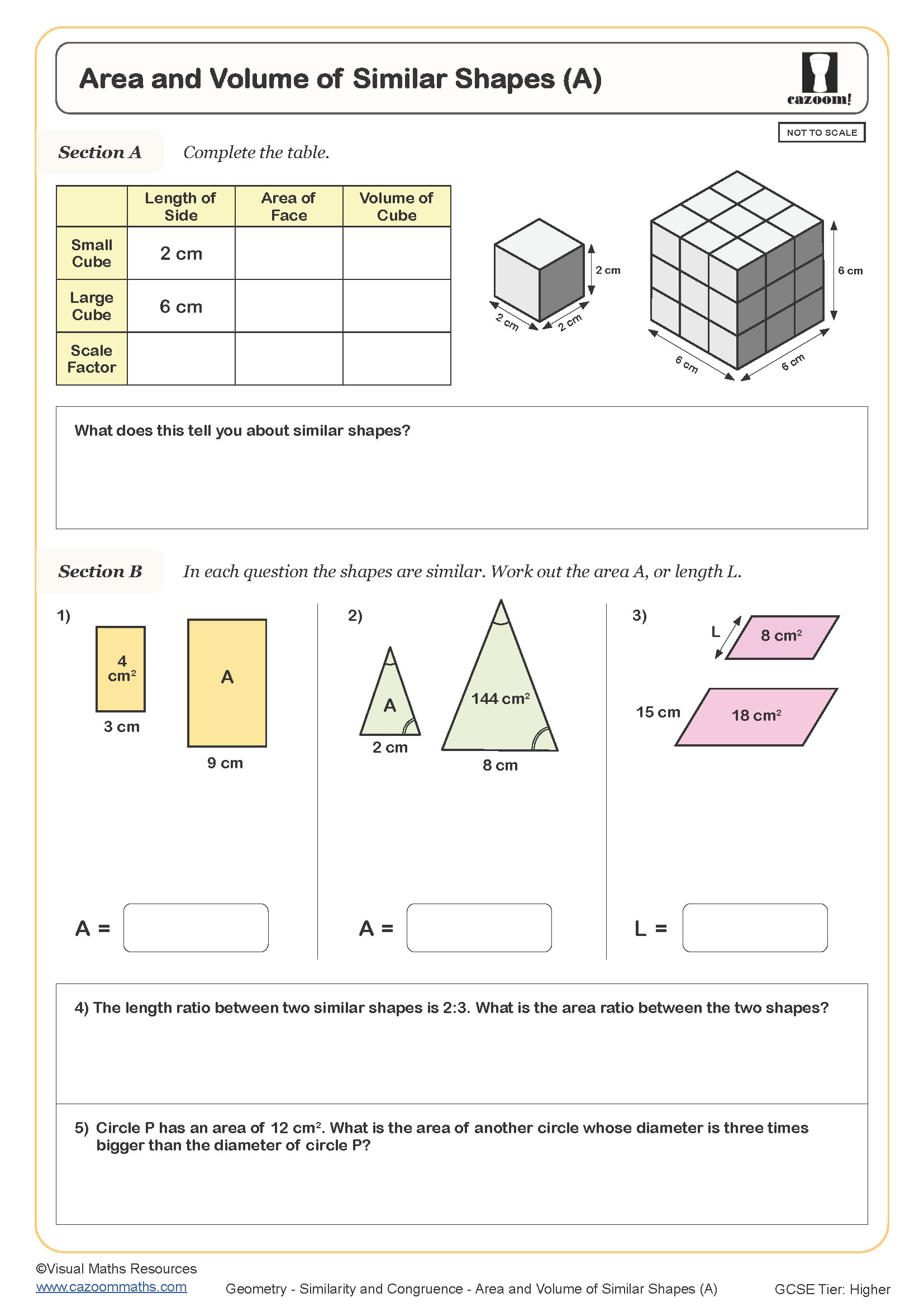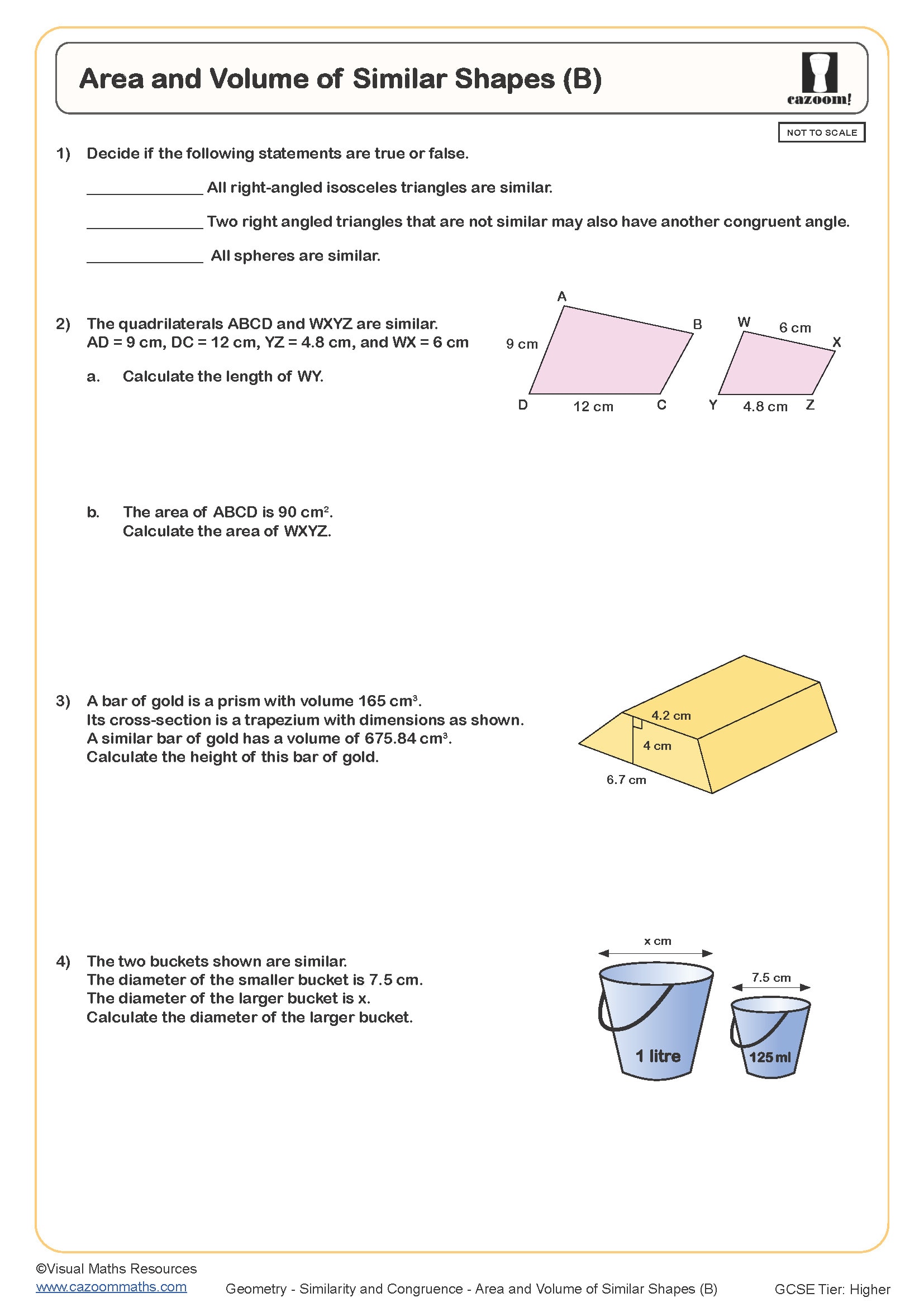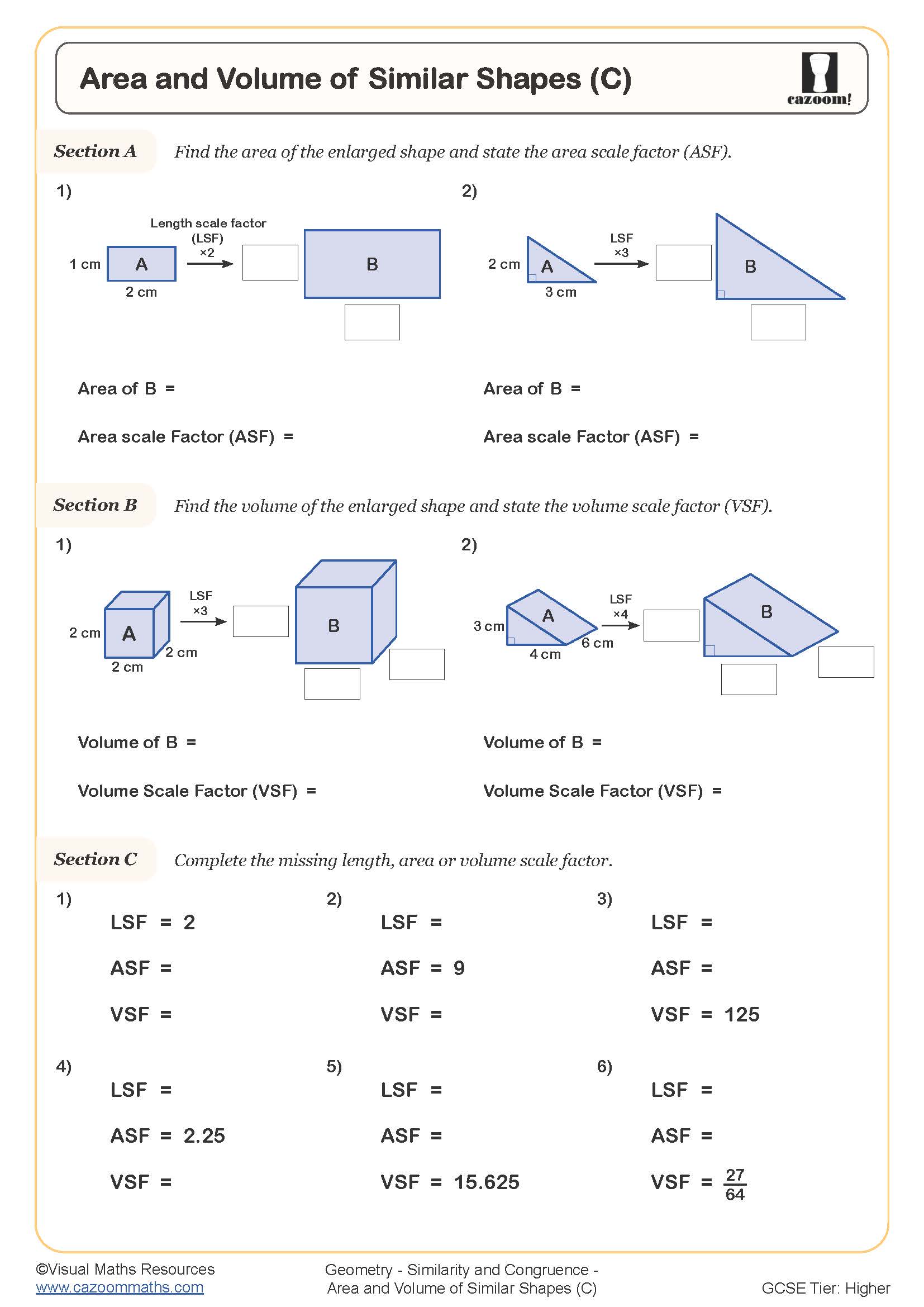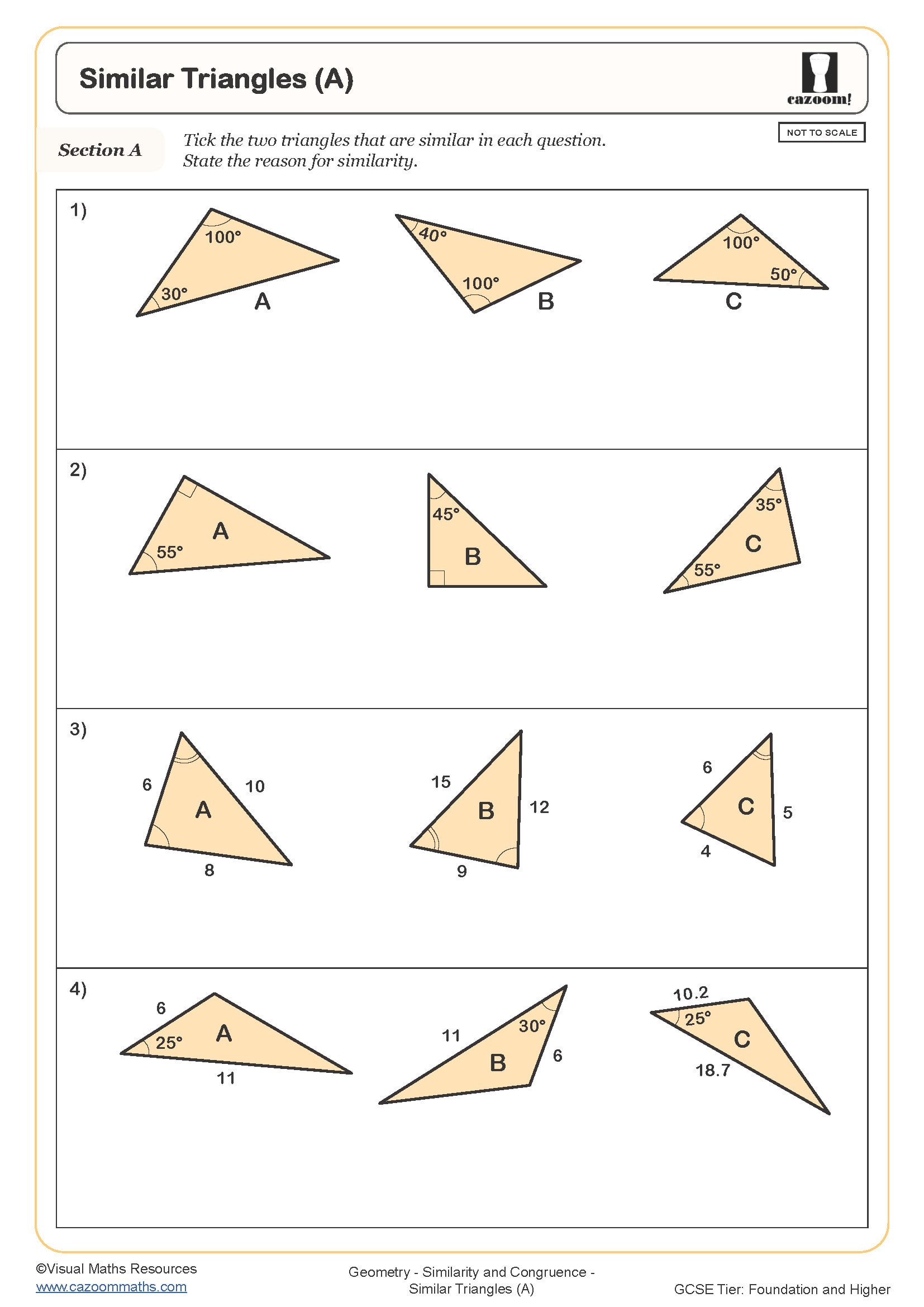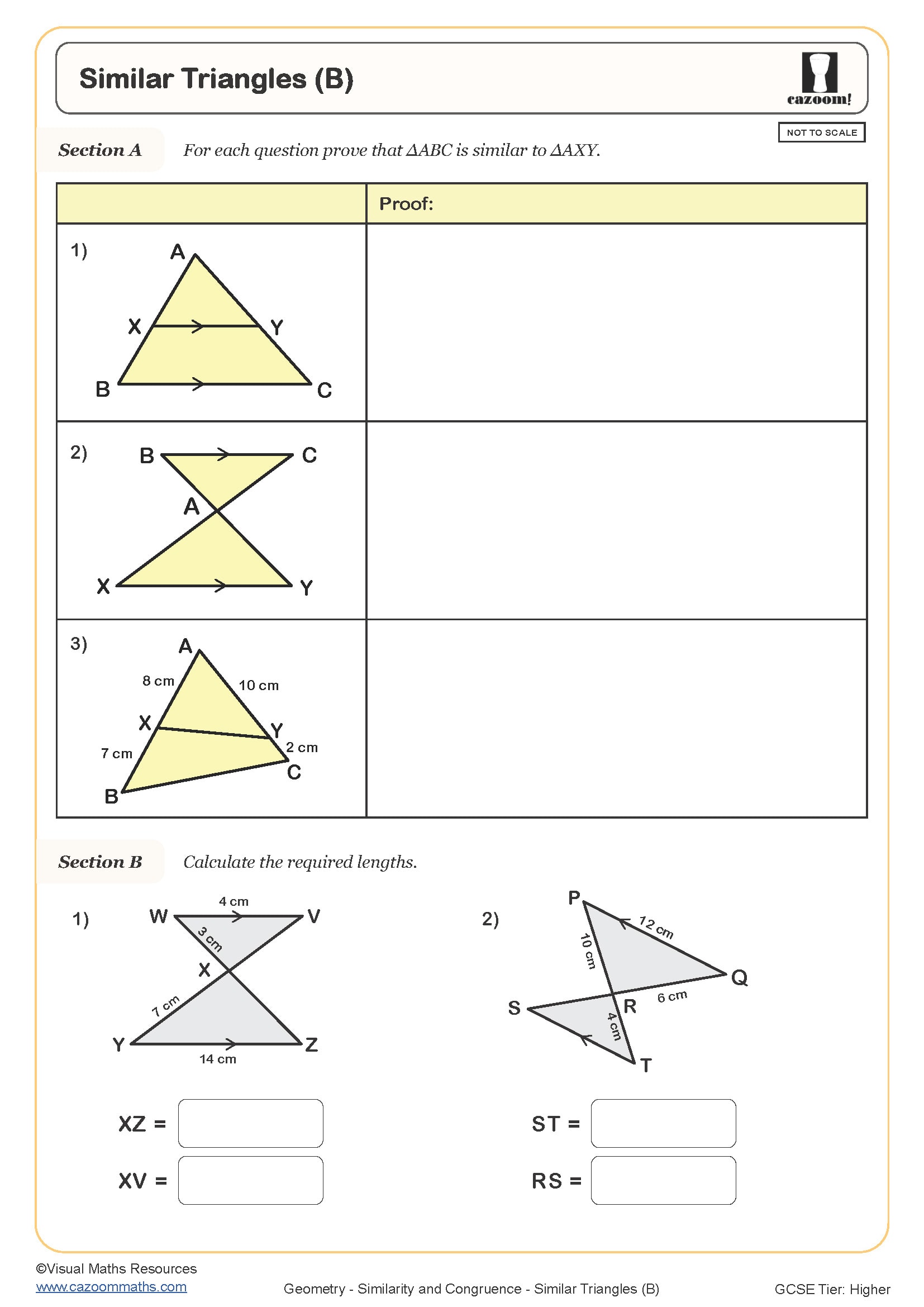Year 11 Similar Shapes Worksheets
GCSE Similar Shapes Worksheet Downloads That Actually Build Confidence
We've noticed how difficult it is to find quality similar shapes worksheet materials that properly scaffold learning. These aren't your typical rushed resources – each worksheet progresses systematically through ratio calculations, area factors, and volume relationships. Students get comprehensive worked solutions showing every step of the thinking process, which honestly makes all the difference for exam preparation.
Essential Skills Covered in These Year 11 Similar Shapes Worksheets
We've packed quite a lot into these worksheets! Students work through finding scale factors, calculating missing lengths using ratios, and tackling those challenging area and volume ratio problems (the ones that always appear on GCSE papers). The progression moves from straightforward linear scale factors to more complex applications. Students particularly enjoy the real-world contexts we've included – it makes the maths feel surprisingly relevant.
Why Year 11 Students Need Dedicated Similar Shapes Practice Worksheets
Here's what we've observed over the years of teaching: students who practice similar shapes regularly perform significantly better on GCSE questions than those who just rely on textbook examples. The connection between consistent practice and exam confidence is undeniable. These worksheets specifically target common misconceptions and exam-style questions that trip students up.
• Builds automatic recognition of similar shape problems in complex contexts
• Develops fluency with ratio calculations and scale factor applications
• Strengthens exam technique through exposure to GCSE-style questioning
• Reduces anxiety by providing familiar practice before high-stakes assessments
• Improves accuracy with multi-step similar shapes problems
Real-World Applications Where Students Actually Use Similar Shapes Skills
Students always ask, "When will I ever use this?" – and honestly, similar shapes appear everywhere once you start looking. From architects scaling building plans to photographers understanding perspective, these skills connect across multiple subjects. It's actually quite satisfying when students suddenly recognise similar triangles in their geography fieldwork or realise how graphic designers use scaling principles.
• Design and Technology: Creating scaled technical drawings and prototypes
• Geography: Understanding map scales and aerial photograph interpretation
• Art and Photography: Applying perspective principles and proportional scaling
• Science: Analysing similar patterns in physics experiments and biology structures
• Architecture: Converting blueprints to actual building measurements
• Engineering: Scaling models and understanding proportional relationships
